What is Wreck Diving and Where ?
One of the main attractions of technical wreck diving is the opportunity to explore the history and mystery of sunken ships and other structures. These underwater time capsules offer a glimpse into the past and a chance to discover artifacts and treasures that have been lost for decades or even centuries. In addition to the historical and archaeological significance of these sites, technical wreck divers also enjoy the thrill of penetration diving, the challenge of navigating and mapping the wreck, and the opportunity to see marine life that has made the wreck its home. Diving wrecks requires specialized training, equipment, and experience. Here are some key steps and equipment that are needed for wreck diving:
-
Training: Wreck diving is considered a more advanced form of diving and requires specialized training. Many dive organizations, such as TDI and SSI, offer wreck diving courses that teach divers the skills and knowledge needed to safely and responsibly explore wrecks. These courses typically cover topics such as wreck diving regulations, safety procedures, navigation, and penetration diving.
-
Equipment: Wreck diving requires specialized equipment to ensure safety and comfort. Some of the essential equipment for wreck diving includes:
-
a full wetsuit or drysuit: to protect against cuts, scrapes, and the colder water found at deeper depths
-
a diving flashlight: for exploring the inside of wrecks and illuminating the way
-
a dive reel or line: to help divers navigate the wreck and mark the way out
-
a dive knife or cutting tool: for cutting away any entanglement
-
a dive computer or depth gauge: to monitor depth and time, and avoid decompression sickness
-
a compass: for navigation and maintaining a sense of direction
-
a signaling device: such as a whistle or dive slate, to communicate with your dive partner
-
a backup dive light and a dive watch with a timer
-
a diving torch, backup dive light, and dive watch with a timer
-
a back-up air supply, in case of emergency, such as a pony bottle or a spare scuba cylinder
-
a dive partner: wreck diving is generally considered a team sport, and it is recommended to always dive with a partner.
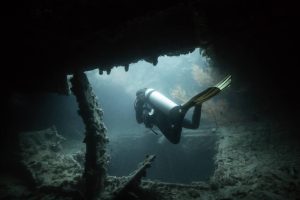
-
Planning and Preparation: Before diving a wreck, it's important to plan and prepare thoroughly. This includes researching the wreck, including its history and location, and obtaining any necessary permits or permissions. Divers should also review diving tables or use a dive computer to plan the dive and ensure that they stay within safe limits for depth and time.
-
Dive Procedures: Once in the water, divers should follow established dive procedures to ensure safety and minimize impact on the wreck and its environment. This includes staying with a dive buddy, using a dive reel or line to navigate, and avoiding touching or removing artifacts. Divers should also be aware of their air supply and use their dive computer or depth gauge to monitor their depth and time.
-
Emergency Procedures: Finally, it's important to be prepared for emergencies and to have a plan in case of an accident. This includes having a dive buddy, carrying a signaling device, and knowing the location of the nearest emergency services.
Wreck diving is an exciting and challenging type of diving that offers the opportunity to explore history, marine life and uncover artifacts and treasures that have been lost for decades or even centuries. It is crucial to have the right training, equipment and to plan, prepare and follow the established dive procedures in order to dive safely. With the right preparation and training, wreck diving can be a rewarding and unforgettable experience Southeast Asia is home to a variety of shipwrecks and other underwater structures that offer excellent opportunities for wreck diving. Here are some of the best wreck diving sites in Southeast Asia:
USS Liberty , sank in 1944
-
The Liberty shipwreck in Bali, Indonesia: This American ship was built in the 1940s and was sunk by the Japanese during World War II. The wreck now lies in about 30 meters of water and is home to a variety of marine life, making it a popular spot for both recreational and technical divers. We at Seapixels frequent this wreck and the resort we are staying at Pebbles and Fins offers both leisure and technical diving.
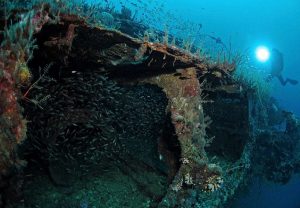
I 66 Japanese Submarin, sank in 1944
-
The I-66 submarine in Sipadan, Malaysia: This Japanese submarine was sunk by the Allies during World War II and now lies in about 40 meters of water. The I-66 is considered one of the best wreck dives in Southeast Asia and offers a unique opportunity to explore the inside of a submarine.
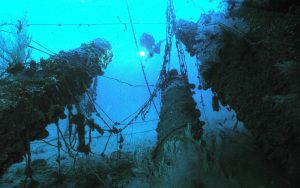
HMS Repluse, sunk in 1959
-
The HMS Repulse in Tioman Island, Malaysia: This British merchant ship was sunk by the Japanese during World War II and now lies in about 30 meters of water. The wreck is home to a variety of marine life and offers a glimpse into the history of the war in Southeast Asia.
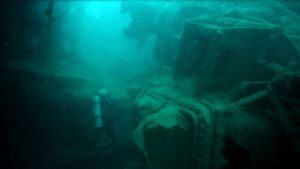
Australian National Maritime Museum HMAS Perth dive 2017
-
The HMAS Perth in Indonesia: This Australian cruiser was sunk by the Japanese during World War II and now lies in about 30 meters of water. The Perth offers a variety of penetration opportunities, including the ship's engine room and gun turrets.
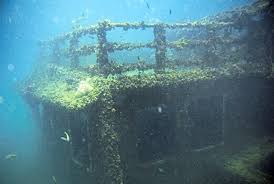
USS Salute, sunk in 1942
-
The USS Salute in Subic Bay, Philippines: This American mine-laying ship was sunk by the Japanese during World War II and now lies in about 30 meters of water. The Salute offers a variety of penetration opportunities, including the ship's engine room and bridge.
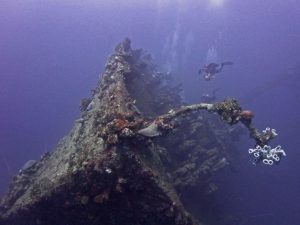
The S.S. Thorfinn in Mergui Archipelago,Myanmar
-
The S.S. Thorfinn in Mergui Archipelago,Myanmar: This British merchant ship was sunk by the Japanese during World War II and now lies in about 30 meters of water. The Thorfinn offers a variety of penetration opportunities, including the ship's engine room and holds.
These are just a few examples of the many incredible technical wreck dive sites that are available around the world. Each site offers its own unique challenges and rewards, and many technical divers choose to specialize in specific types of wrecks, such as WWII ships, submarines, or planes.
Lang Tengah newly Submerged Plane
It's important to note that Technical Wreck Diving is a complex and challenging type of diving that requires extensive training, equipment, and experience. It is not recommended for novice divers and should only be attempted by divers who have completed the relevant training and have the necessary experience and skills. TDI Courses provides full extensive Wreck courses or plan your courses with us at Seapixels. We at Seapixels can start your journey into Wreck Diving with Sidemount and Nitrox. Drop us an email at Terence@seapixels.org for more details.